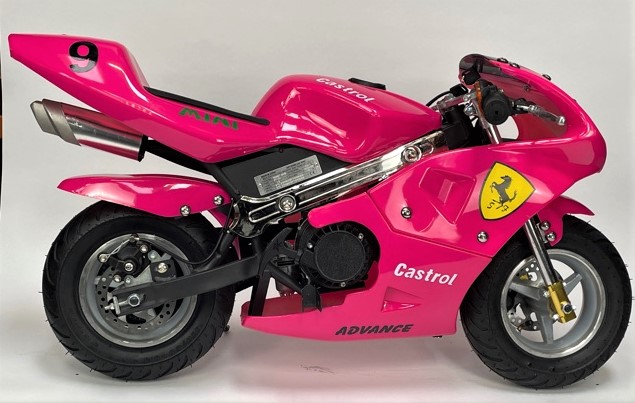How Does Pressure Washing Influence the Value of Your Home?
When you consider selling your home, you might not immediately think about pressure washing, but it can play an essential role in enhancing your property’s value. A clean exterior not only boosts curb appeal but also signals to potential buyers that the home has been well cared for. Just imagine how a spotless facade could impact first impressions and what that might mean for your bottom line. Curious about the specific ways pressure washing can elevate your home’s worth? Let’s explore the benefits further.
Benefits of Pressure Washing
Over time, dirt and grime can accumulate on your home’s exterior, making it look worn and uninviting. Pressure washing in Richmond, VA offers you a quick and efficient way to restore your home’s appearance. Not only does it remove stubborn stains, mold, and mildew, but it also enhances the longevity of your surfaces.
By using eco-friendly solutions, you can guarantee that your cleaning methods are safe for the environment while still being effective.
Plus, pressure washing is a cost-effective cleaning option compared to other methods, saving you both time and money.
You’ll find that a clean exterior not only boosts your home’s aesthetic appeal but also protects it from wear and tear, ultimately contributing to its overall value.
Enhancing Curb Appeal
First impressions matter, especially when it comes to your home’s curb appeal.
By effectively removing stains and dirt, pressure washing can transform your property’s appearance and make it more inviting.
This not only enhances your home’s look but also helps maintain its value over time.
First Impressions Matter
When potential buyers approach your home, their first impression is shaped by what they see from the curb. A clean, well-maintained exterior creates a welcoming atmosphere and sets the tone for their entire visit.
Pressure washing removes dirt, grime, and mildew, instantly enhancing your home’s curb appeal. This effort doesn’t just make your property look good; it also communicates that you care about maintenance and upkeep.
First impressions have a lasting impact on buyers, influencing their perception of your home’s value. By investing in pressure washing, you’re not only improving aesthetics but also increasing your chances of a quicker sale at a higher price.
Removing Stains Effectively
A pristine exterior not only boosts your home’s curb appeal but also highlights the need for effective stain removal. When you pressure wash, you’re not just cleaning; you’re preparing your surfaces for a fresh look.
Stains from mold, mildew, or dirt can make your home appear neglected, which can deter potential buyers. By tackling these blemishes, you enhance your home’s attractiveness and increase its perceived value.
Start with thorough surface preparation to guarantee the best results. This means clearing debris and selecting the right pressure for different surfaces.
Using the right cleaning solutions can also help lift stubborn stains. A clean, stain-free exterior instantly draws the eye, making your home stand out in the neighborhood and leaving a lasting impression.
Maintaining Property Value
Curb appeal plays an essential role in maintaining your property’s value, acting as the first impression for potential buyers. When you invest in property upkeep, like pressure washing, you enhance the overall appearance of your home, making it more inviting.
Clean surfaces, free from dirt and grime, demonstrate that you care for your property, which can lead to higher offers when it’s time to sell. Regular maintenance isn’t just about aesthetics; it’s vital for value retention.
Impact on Home Value
When you pressure wash your home, you’re not just boosting its curb appeal; you’re also investing in its overall value.
Regular maintenance can prevent costly repairs down the line, making your property more attractive to potential buyers.
This proactive approach can greatly enhance your home’s marketability when it’s time to sell.
Curb Appeal Enhancement
Enhancing your home’s curb appeal can greatly boost its value and attract potential buyers. When buyers pull up to your property, the first impression matters. A clean, well-maintained exterior creates an inviting atmosphere.
Pressure washing is an effective way to refresh your home’s exterior, removing dirt and grime that can make it look neglected. Coupling this with landscaping enhancements, like manicured lawns and vibrant flower beds, further elevates your home’s appearance.
Additionally, if you’re considering exterior renovations, pressure washing guarantees surfaces are prepped and ready for updates, making the entire project more successful.
Preventive Maintenance Benefits
Regular pressure washing serves as an essential form of preventive maintenance that can greatly impact your home’s value.
By incorporating this practice into your maintenance schedule, you’re not just enhancing aesthetics; you’re also protecting your investment.
Dirt, mold, and grime can cause long-term damage to surfaces if left unchecked, leading to costly repairs down the line.
Engaging in regular preventive care helps you maintain your home’s condition and prevents deterioration.
When potential buyers see a well-maintained property, they’re more likely to view it favorably, which can result in higher offers.
By prioritizing pressure washing as part of your home upkeep, you’re safeguarding your property’s value for the future.
Don’t wait until it’s too late—start today!
Marketability Boost Factors
A clean exterior not only makes your home look inviting but also greatly boosts its marketability. In today’s competitive real estate market, first impressions matter.
Pressure washing can enhance buyer perception considerably, aligning your property with current market trends. Here are some factors that contribute to this boost:
- Increased curb appeal: A spotless exterior draws in potential buyers.
- Enhanced property value: A clean home often appraises higher.
- Shorter selling time: Homes in pristine condition tend to sell faster.
- Lower maintenance concerns: Buyers feel more at ease with a well-maintained property.
- Positive neighborhood impression: Your home reflects well on the community, attracting more interest.
Emphasizing these elements can make your home stand out in a crowded market.
Preventive Maintenance Advantages
Preventive maintenance offers significant benefits that can boost your home’s value and appeal. By investing in regular pressure washing, you’re practicing effective preventive care that keeps your home’s exterior looking fresh and well-maintained.
This proactive approach helps prevent the buildup of mold, dirt, and grime, which can lead to costly repairs down the road.
Moreover, maintaining your property enhances its curb appeal, making it more attractive to potential buyers.
You’ll also enjoy long term savings by avoiding the need for extensive renovations that can arise from neglect.
Choosing the Right Service
When you’re considering pressure washing services, it’s essential to do your homework to guarantee you choose the right provider.
Start by making a solid service comparison and evaluating different options. Here are some key factors to keep in mind:
- Experience: Look for a company with a proven track record in pressure washing.
- Reviews: Check online reviews and testimonials from previous customers.
- Insurance: Verify the service provider has liability insurance for protection.
- Pricing considerations: Get quotes from multiple companies, but don’t just go for the cheapest option.
- Equipment: Inquire about the type of equipment they use and their cleaning methods.
Taking these steps will help you select the best pressure washing service for your home.
DIY vs. Professional Pressure Washing
Choosing the right service sets the stage for deciding whether to tackle pressure washing yourself or hire a professional.
If you opt for DIY techniques, you can save money and control the process, but you might lack the experience to achieve ideal results. Pressure washing requires knowledge of the right equipment, cleaning solutions, and techniques to avoid damage to your home’s surfaces.
On the other hand, professional services come with expertise and access to advanced equipment. They can efficiently handle tough stains and guarantee your home looks its best without the risk of injury or damage.
Ultimately, weigh the cost, your available time, and your comfort level with DIY projects against the benefits of hiring a pro to enhance your home’s value effectively.















)

